© 2025 ALLCITY Network Inc.
All rights reserved.

Vance Joseph’s tenure as the Denver Broncos head coach has been scrutinized to no end, as fans have been critical of just about everything, from his press conferences to late-game mismanagements.
Re-watching every game as we grade every player and coaches in our weekly game grades, the coaching staff has “earned” an average grade of a C, with two A performances and three Fs. Meaning it’s been far from great but also not the disaster that some have made it out to be.
That’s why we went back to the tape to give you the real reasons why Joseph should be retained or let go from a schematic and game management standpoint.
Working with what they got
The offensive talent pool at Bill Musgrave’s disposal has slowly been depleted bit by bit. His two best tight ends are injured, his two best receivers no long available—don’t forget the Demaryius Thomas trade—and two more starters on the interior offensive line, their most veteran members, out, as well. With all that turnover, it’s been an uphill battle for the offense, all while adjusting to new starting quarterback Case Keenum.
Earlier in the year, Musgrave was more aggressive, utilizing more spread looks and letting Keenum gun it all over the field but that also led to costly turnovers—especially in the red zone—forcing Musgrave to reel it in.
The impact of the run game has given the offense a huge boost but also made the attack one dimensional and easy to stop. For example, in Week 14 against the San Francisco 49ers, an insistence on running the ball outside killed the Broncos, as the Niners ‘D’ countered by inserting more speed on the field and playing tons of three-safety big nickel personnel, which shut down all designed outside runs.
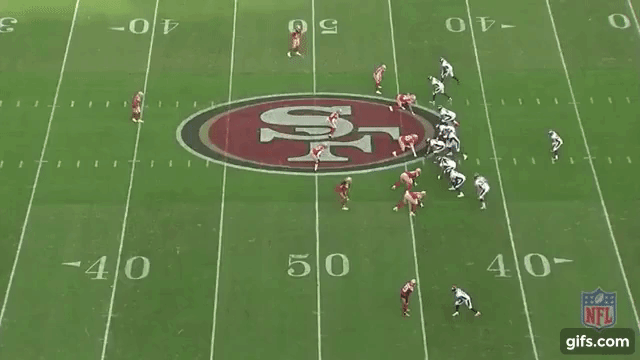
Keenum and the passing game work off the run with play-action passes and vertical throws downfield to attack loaded boxes. If the ground game isn’t effective, the Broncos passing attack is regularly facing third-and-long where they’re doomed—much like Keenum’s 2017 Minnesota Vikings were.
There’s no easy fix here with the players the Broncos have, and frankly, it’s hard to be too critical of Musgrave who’s been dealt a tough hand, and to his credit, has got Keenum’s production to be the best of his career.
However, the fact that Denver’s offense has been that easy to game plan against is at the heart of the great issue here.
As much as the talent level has limited Musgrave’s options, around the NFL, creative play callers have overcome even worse rosters and kept their offenses effective, something Denver’s OC has been unable to do with a conservative mantra aimed at avoiding turnovers.
We featured how effective and creative it was to use 12 personnel—two tight ends and a running back—in spread out five-wide formations, keeping defenses off balance and allowing the Broncos to do a variety of things out of that package.
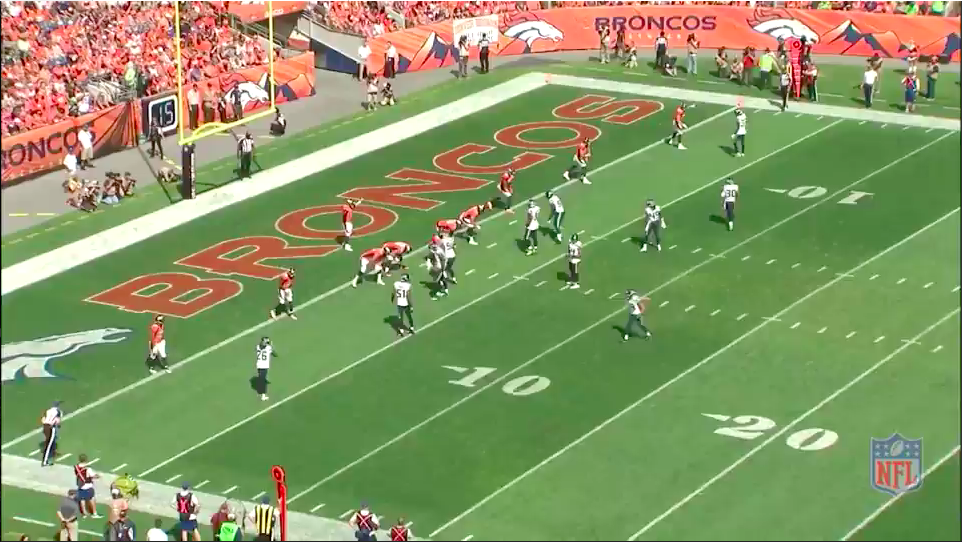
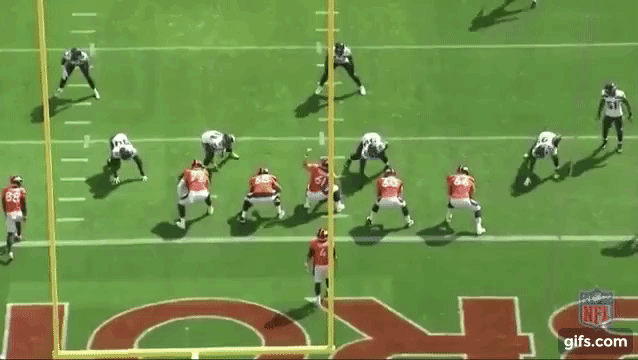
It would be nice to see more formations with receivers stacked to one side, a greater variety and creativity in route concepts and increased misdirection pre-snap. The kind of things that the most creative play callers in the league are doing to manufacture easy completions.
We’ve seen some of this in 2018 but not nearly enough. This Emmanuel Sanders TD against the Pittsburgh Steelers, where No. 10 was hidden by running a delayed route, is a great example.
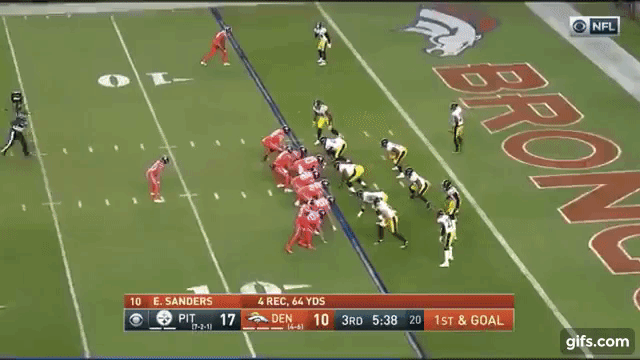
To diversify and modernize the attack, you need speed at the skill positions and Denver just doesn’t have that outside of Phillip Lindsay, who they’ve been overly reliant on.
As far as Lindsay goes, he’s been lined up outside as a receiver more often since Sanders’ injury but hasn’t really been given a chance to run routes, instead, taking simple check downs and expected to make defenders miss in space. Allowing him to actually run routes and see if he can make defenders miss that way, would be a start.
Rookie wideout Courtland Sutton has had his moments on contested catches, but little else. Sutton needs to be sharper running in-cutting routes, especially slants where he could be dangerous with the ball in his hands. At the same time, he needs to be involved in the screen game and utilized out the slot, where his size and ability to create YAC can be a mismatch in the open field.
Beyond just fancy play calls with more window dressing, Musgrave’s been unable, or unwilling, to move his best players around and hunt for matchups. If there’s one criticism he truly deserves, in a year in which he’s done his best with what he’s had, it’s that Musgrave hasn’t always put his skill players in the best positions to succeed.
Bend don’t break
On the other side of the ball, Joe Woods and Vance Joseph’s ability to scheme the back end stood out in close losses to the Kansas City Chiefs and Los Angeles Rams.
It was particularly impressive in a season in which the Broncos have had to go away from their man-heavy coverages as they just haven’t had enough competent corners. When at full strength and with their pass rush working, Denver’s been effective in zone, though.
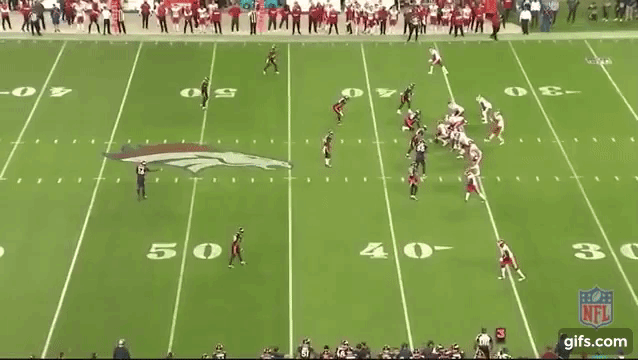
The defense also implemented a very effective rush plan against Russell Wilson, containing the mobile QB in the pocket and generating six crucial sacks.
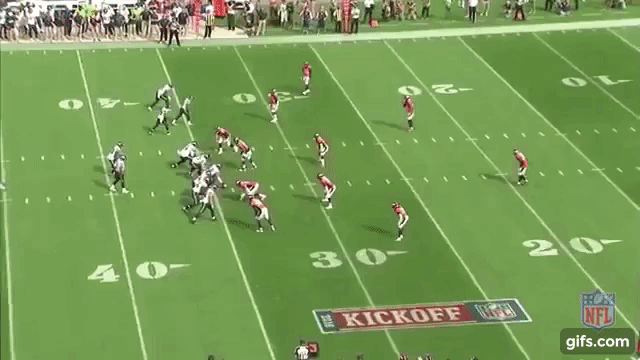
Against the Chiefs, they showed the ability to manufacture pressure, too, but just couldn’t close a few key sacks, which ultimately was their downfall.

The best case you can make for the Broncos to retain their staff is how effective the defensive scheme’s been against some of the NFL’s best offenses—holding the Houston Texans, Los Angeles Chargers, and Pittsburgh Steelers to an average of 19 points for example.
However, the breakdowns in coverage have killed this ‘D’, which is built on the premise of allowing yards while preventing big plays and manufacturing key turnovers. Those breakdowns fall squarely on the coaches shoulders.
As the injuries have mounted, even zone coverages have become less effective with the inexperience and lack of cohesion in the back seven, putting Woods in a tough spot.
In his move to playing as the deep safety, Justin Simmons has struggled to close down angles and make plays on the ball. Linebackers have been lost in coverage at times, and cornerbacks not named Chris Harris Jr. have struggled mightily.
Even when Denver’s bend-don’t-break philosophy has worked, their red zone defense has still allowed 56 percent of red zone opportunities to end up as touchdowns—13th best in the NFL—far from elite numbers to justify such a conservative approach.
Schematically, Woods’ defense has lacked the aggressive tone-setting mentality that it once had, and for as much as they’ve been able to stand up to high-end NFL attacks, they’ve also been exposed by some dreadful offenses like the pre-Lamar Jackson Baltimore Ravens, New York Jets, and 49ers. Heck, even the Oakland Raiders moved the ball all over the field with ease, and it hasn’t been Woods’ scheme that’s led to more turnovers being created in the Broncos best games.
In many ways Denver’s played a simple vanilla defense, that’s had it’s moments but hasn’t done anything truly special. If there’s a reason the Broncos have been fairly successful against high-powered offenses, it’s been because of their pass rush and secondary playing up to their opponents, more than any special tactical plan.
Game management
When watching the tape, the scheme and personnel packages are the first thing we observed, but make no mistake, no matter how or when Joseph’s tenure ends in Denver, game management will be a big topic of conversation.
Personally, I believe people are too focused on game management when evaluating head coaches, after all even the best HC’s make mistakes, see Bill Belichick a week ago, but at the same time, there’s no debating that Joseph’s been far from a master tactician late in games.
Joseph’s record in one-possession games isn’t great, as he’s 4-5 in 2018 and 6-8 in his tenure as a head coach in Denver, a testament to how situational football and clock management haven’t been his strong suit.
Many will point to his 1-8 record on challenges, too, though at least part of that is on the staff members charged with helping VJ in such situations.
Close losses like the one against the Texans are perfect examples of Joseph’s struggles in managing late game situations. Joseph’s mismanagement of the clock allowed the Texans to score a field goal before the half and then led to Denver not gaining extra yardage to make their potential game-winning kick any easier.
The head coach’s decision to not challenge a 20-yard completion to Tim Patrick in the Week 14 loss to the Niners, only to challenge a fumble-incompletion later on that would’ve only saved Denver seven yards, burned a crucial timeout late in the fourth quarter as the Broncos tried to get the ball back.
The instance against the Texans was the truly egregious, as Joseph could’ve easily prevented the field goal at the end of the half by burning time off the clock before attempting a long Denver field-goal. His decision to attempt the field goal with time remaining seemed rushed and reactionary, a big red flag as coaches should have these types of scenarios planned out ahead of time to prevent them from making spur of the moment decisions that end up costing them. These are only two examples, but both cost the Broncos big in games they had a chance to win at the end.
The Broncos are the seventh-most penalized team in the NFL, another issue that falls squarely on the head coach, who’s been unable to keep his guys disciplined, especially on the road, where the Broncos are the third-most penalized team in the league.
Staying consistent has been a good thing for Joseph’s message to the team and leadership, but a lack of halftime adjustments have been a big problem too.
In his first stint as a DC in Miami prior to getting the Broncos job, Joseph had the benefit of good play calling on offense allowing him to be more aggressive defensively. That aggression and schematic unpredictability have been missing in Denver in an overly conservative approach on both sides of the ball.
Worst yet, the Broncos have been unable to set the tone and win on their terms, as the team’s passive mindset has put them at the mercy of their opponents, and those who’ve played mistake-free football have been able to beat the Broncos consistently.
In conclusion
Given all that, you can understand the C grade Joseph and his staff have received.
This team has looked simple and old-fashioned, playing a brand of football that can keep them afloat but can’t get them over the top. It hasn’t been the disastrous coaching performance some would like to make it out to be, however, when you look around the NFL, the play-calling, game management, and tactics have been nothing special.
Maybe the biggest takeaway from this is that this staff hasn’t put their imprint on the team, which, in many ways, is lacking an identity.
Joseph’s been a good leader in hard times, he’s kept a veteran group fighting and committed, but their inability to adapt or adjust has been frustrating.
Even if the Broncos win out and are 9-7, its hard to find many things beyond their record in tough circumstances that this staff can hang their hats on to keep their jobs, leading me to the conclusion that moving on in the offseason is probably best for Denver.
Comments
Share your thoughts
Join the conversation



